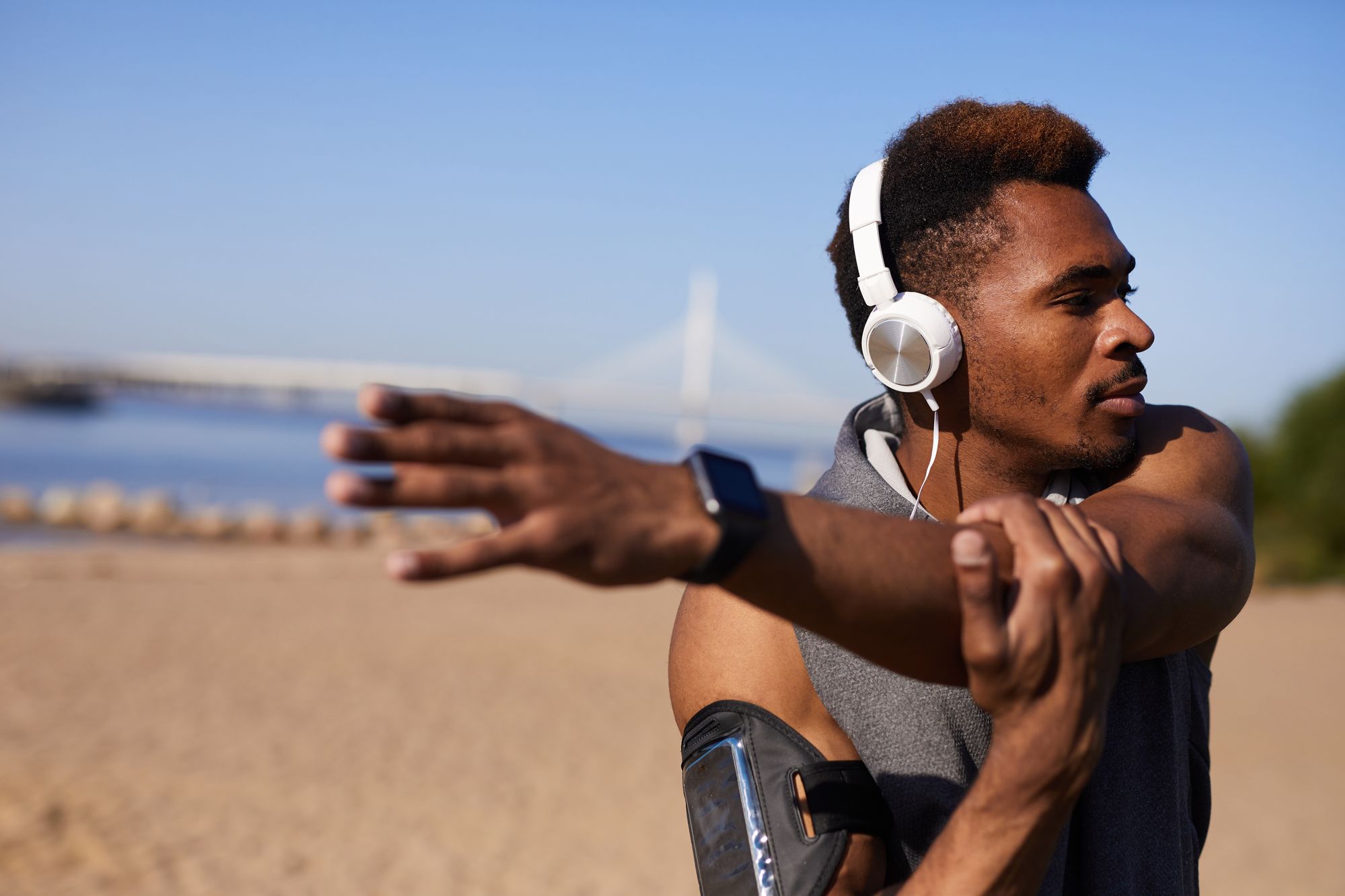The One Muscle Group You Must Train: Rotator Cuff Warm Up
Now, where training is involved, many of us tend to push, push and push some more. Not sure what we mean? Just take a look at your training routine.

Ask anyone at the gym what they’re working on for the day, and you’d be undoubtedly hard-pressed to find someone training their rotator cuff. ?
You might run into hardcore bodybuilding enthusiasts working on their forearms and neck – all pretty obscure muscle groups by any standards – with advanced lifting techniques. Just not rotator cuff.
And you’re likely the same; you’ve probably overlooked your rotator cuff too. But that’s too bad, because not only can rotator cuff injury hinder your progress in the gym, but it can also affect your everyday function.
In this article, learn just how vital your rotator cuff muscles are and how you can best train them so that you can crush your 2021 fitness resolutions!
Why should I do rotator cuff warm up?
To understand why you should care about the rotator cuff, you need to understand the anatomy of the muscle group and its functions.
Anatomy of the rotator cuff
Now, the rotator cuff consists of four muscles:
- Subscapularis – Internal shoulder rotation and anterior stability
- Infraspinatus – External rotation and overall shoulder stability
- Supraspinatus – Abduction and external rotation
- Teres Minor – External rotation and overall shoulder stability
The rotator cuff begins from the scapula. It inserts into the humerus and acts as the stabilizer for the glenohumeral joint (a ball and socket).
If you skipped the above portion because of all the foreign-looking terminology, it's okay. Ultimately, remember that your rotator cuff is responsible for the external rotation of the shoulders.
What happens when the rotator cuff is weak?
Now, where training is involved, many of us tend to push, push and push some more. Not sure what we mean? Just take a look at your training routine. Is it packed with shoulder press, bench press, push-ups, and dips? There you go – all these exercises strengthen all the muscles involved with the internal rotation of your shoulders.
As a result, you're bound to run into problems like an imbalance in the opposing muscles. And in the long-run, this can cause increased instability in the shoulder during lifts. You’d be looking at shoulder pain, impingement, and eventually rotator cuff tears – not fun.
Hopefully, you’re now convinced that you need to do rotator cuff warm up. Besides, in some cases, directly working your rotator cuffs can help with your strength on compound pushing and pulling movements (such as the bench press). Who would say no to that?
Which exercises target the rotator cuff muscles?
Dumbbell side-lying external rotation
According to a 2004 analysis of the rotator cuff muscles, the side-lying external rotation movement is your best bet at targeting the rotator cuff muscles. More specifically, this exercise helps strengthen the infraspinatus and teres minor – both of whom are responsible for external rotation and contribute significantly to overall shoulder stability.
As this is less well-known exercise, here’s how you can perform the exercise:
- Lie sideways on a flat bench. Hold a dumbbell with one arm. Your other arm should be on top of the bench and folded.
- Bend the elbow of the arm holding the dumbbell until it is at a 90-degree angle between your upper arm and forearm.
- Exhale and externally rotate your forearm, so the dumbbell is lifted in a semicircular motion. Maintain a 90-degree angle between your upper arm and forearm as you do so.
- Keep moving your arm until it is perpendicular to the floor and your torso is pointed toward the ceiling. Hold the contraction for a second.
- Inhale and go back to the starting position.
- Repeat for the number of reps in your set and switch arms.
You’d do best with light weights for this exercise. Only up your weights once you’re confident that you’re performing the movement correctly – you don’t want to end up emphasizing your shoulders, which then defeats the purpose of going with this exercise.
Cable face pulls
This exercise may already be a staple in your training routine; as you know, cable face pulls help strengthen your rear delts. But they also target your rotator cuffs!
Now, here are two lesser-known tweaks to your face pull that can increase the activation you feel in both your rear delts and rotator cuffs:
- Pull the rope back to your face… and apart – Nearing the end of a repetition, you should not only pull the cables toward your face, but you should also try to pull them apart. This detail will be a complete game-changer as you’re now forcing yourself to externally rotate your shoulders – thereby increasing your rotator cuff activation.
- Use an underhand grip – Using an underhand grip, instead of the overhand grip, allows you to feel what external rotation is supposed to feel like fully. That's because you won't be able to pull the ropes apart using the underhand grip if you're not actively externally rotating your shoulders.
Cable or band upward rotation
The last exercise to strengthen your rotator cuffs would be the cable or band upward rotation. You can think of it as the most functional exercise, as it’s going to activate all four of your rotator cuff muscles at one go.
To perform this exercise:
- Get down on one knee in an upright posture and grab either a band or a handle to a cable and set it roughly at shoulder height.
- Pull the band towards you in a rowing motion with your elbow at shoulder height.
- Hold this position briefly, then externally rotate the shoulder by bringing the hand up toward the ceiling. Make sure your elbow is still locked in the same position.
- Return to the starting position and repeat for as many reps as there is in one set.
- Switch arms.
Always make sure your core is tight and contracted throughout the movement.
How often should I train my rotator cuff?
When it comes to training your rotator cuff, you should treat it just like any other muscle group. Yes – even if you can’t see it growing bigger in the mirror.
So, do include the following routine 2 to 3 times per week:
- Dumbbell side-lying external rotation
- 2 to 3 sets of 15 to 20 reps
- Cable face pulls
- 2 to 3 sets of 10 to 15 reps
- Cable or band upward rotation
- 2 to 3 sets of 15 to 20 reps
That’s all we have on how to train your rotator cuffs! If you’re ever not sure of how you can program your workouts for maximum growth, why not check out the Gymstreak app? All you need to do is input your body composition details and fitness goals – you’ll then receive a personalized training plan tailored to your personal needs! How cool is that?
References
Maruvada, S., & Varacallo, M. (2019). Anatomy, Rotator Cuff. In StatPearls. StatPearls Publishing. http://www.ncbi.nlm.nih.gov/books/NBK441844/
Page, P. (2011). SHOULDER MUSCLE IMBALANCE AND SUBACROMIAL IMPINGEMENT SYNDROME IN OVERHEAD ATHLETES. International Journal of Sports Physical Therapy, 6(1), 51–58.
Reinold, M. M., Wilk, K. E., Fleisig, G. S., Zheng, N., Barrentine, S. W., Chmielewski, T., Cody, R. C., Jameson, G. G., & Andrews, J. R. (2004). Electromyographic Analysis of the Rotator Cuff and Deltoid Musculature During Common Shoulder External Rotation Exercises. Journal of Orthopaedic & Sports Physical Therapy, 34(7), 385–394. https://doi.org/10.2519/jospt.2004.34.7.385

